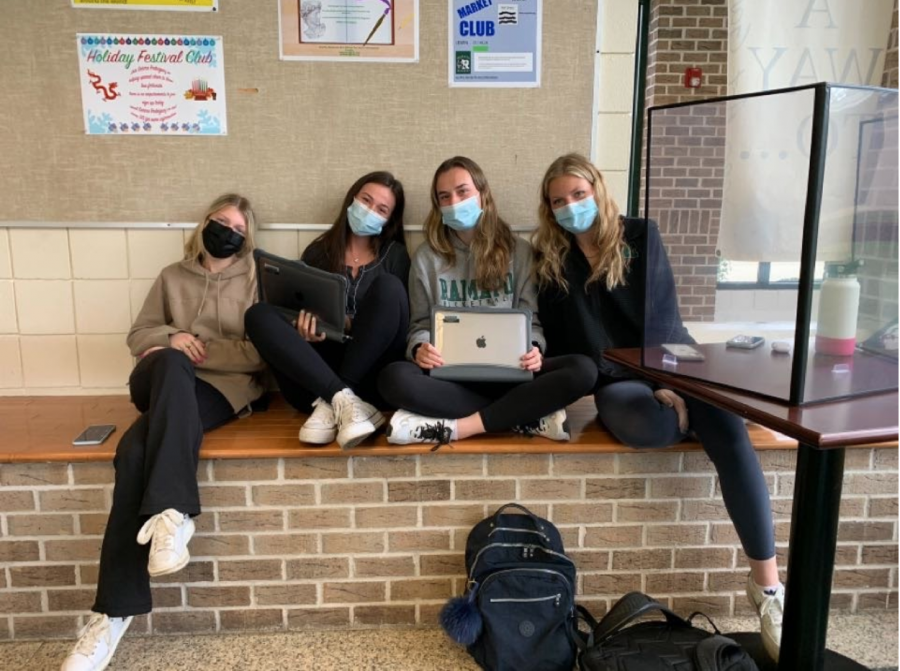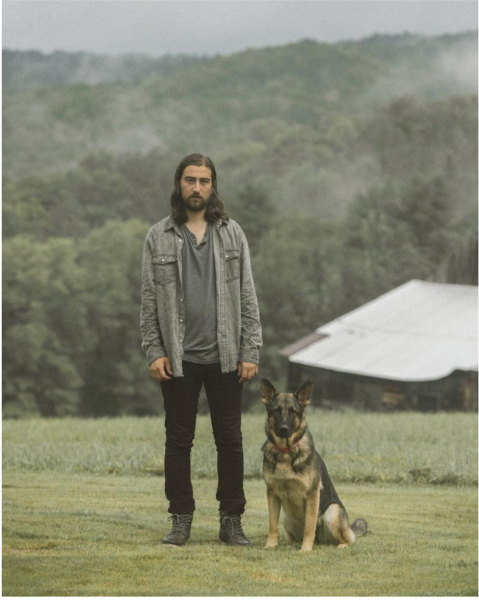Ramapo Facing the Effects of COVID-19: One Year Later
Photo courtesy of Sophia Katsouris
(from left to right) Seniors Megan Johnston, Kelly Heffernan, Lauren Achter, and Katelyn Edwards pose for a picture in the building.
May 19, 2021
It has now been over a year since the initial shutdown of school and life as we once knew it. What was thought to be a slight, temporary interruption in our daily lives has now shifted to a uniquely shared experience of mask wearing and social distancing, descriptively labeled as “the new normal.”
While many of us have had to adjust our daily routines to accommodate COVID-19 restrictions once the initial lockdown was lifted, Ramapo has also had to address how to safely conduct and regulate in-person interactions at school. Since the beginning of the school year, the bell schedule and cohort groups have been slightly adjusted over the months to find the most effective method.
Although the majority of Ramapo students are now following virtual instruction, there are still some students who choose to attend school in person—not to mention the Ramapo faculty who are present in school everyday.
The most recent change, since February 3rd, combined the two in-person groups into a single cohort. While this change did not affect most students learning at home, students who physically learn in the building attend the first six periods in-person, every day of the week.
According to senior Macy Eglinton Manner (‘21), “As someone who has been in-person for the majority of the year, I was very excited with the decision to combine cohorts. Although I still see only a fraction of my classmates, getting back to a mostly consistent routine of being in-person every day has grounded me.”
When asked about how her senior year in high school has changed, Macy adds, “While seniors are obviously missing out on the experience of a ‘classic’ senior year, I am incredibly grateful for the efforts of Ramapo’s administration to recognize the challenges everyone is facing.”
Whether you are taking classes virtually or in person, there have undoubtedly been many difficulties and obstacles. However, teachers and administrators have also faced a unique set of challenges and have had to adapt to the often inconvenient, unexpected problems that the pandemic has caused.
English teacher Ms. Schwarz expresses, “Hybrid teaching has definitely tested me. My classroom has been plagued with tech issues that have ruined one too many lessons and tested my patience; tech issues that I don’t have in the afternoon when we are all on Zoom together.”
Not only does Ms. Schwarz, and other teachers alike, face technology issues caused by the increased reliance on technology in class, but she also finds it difficult to assess students’ engagement and comprehension of the material.
Ms. Schwarz adds, “[A] big issue is the silence. Normally, I can read students’ faces—I know when they understand a big concept or an assignment. Now, not only are we battling silence from the Zoom boxes, I can’t even see them clearly to read their body language. I force my students to type into the chat or give me a thumbs up to check in. Mostly, there is no feedback. It sometimes feels like I am doing a one woman show—off Broadway with a very unimpressed audience.”
Despite the difficulties many of us have faced in light of COVID-19, the prospects of a ‘normal’ year are in sight with the increase in students opting to go to school in person safely and with the increase in vaccination rollouts. Ms. Schwarz optimistically anticipates, “Next year (hopefully), you won’t be able to hide behind a Zoom box or sit quietly in a breakout room; you will all have to figure out how to participate and have discussions face to face again.”






